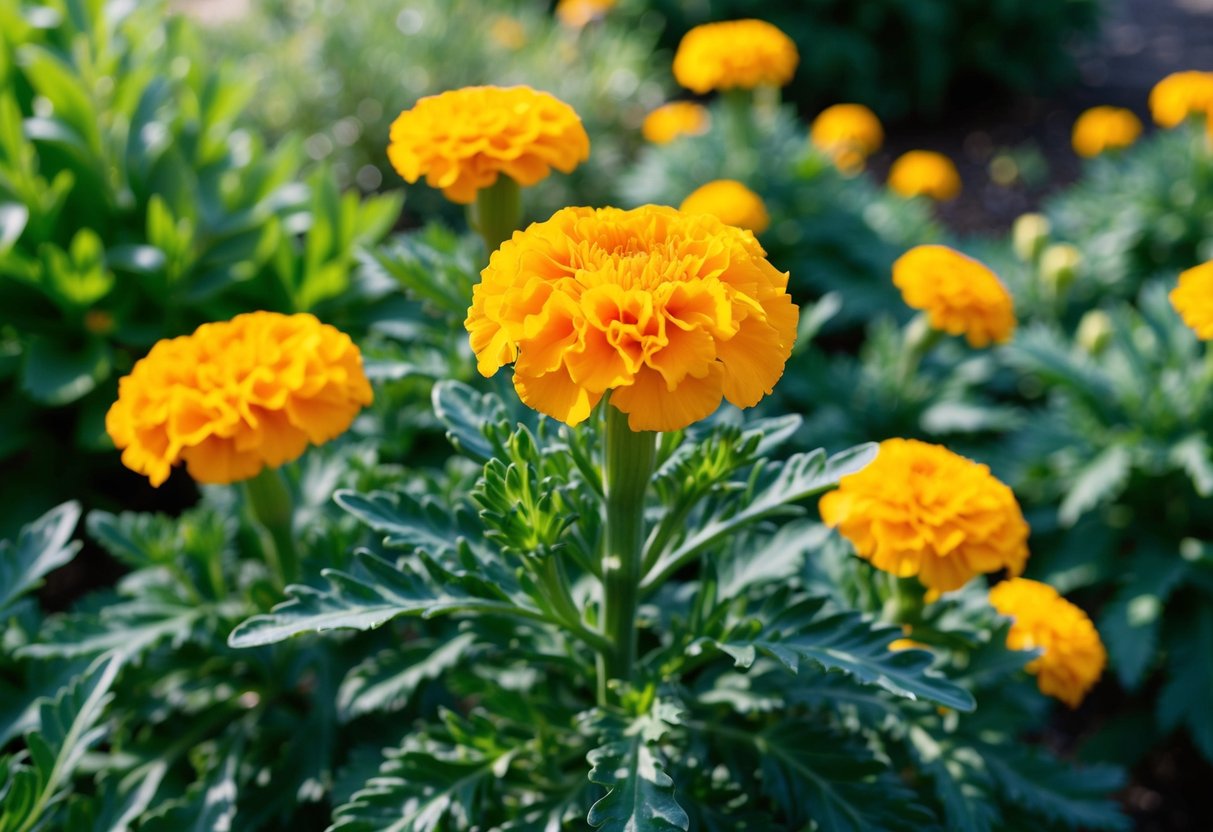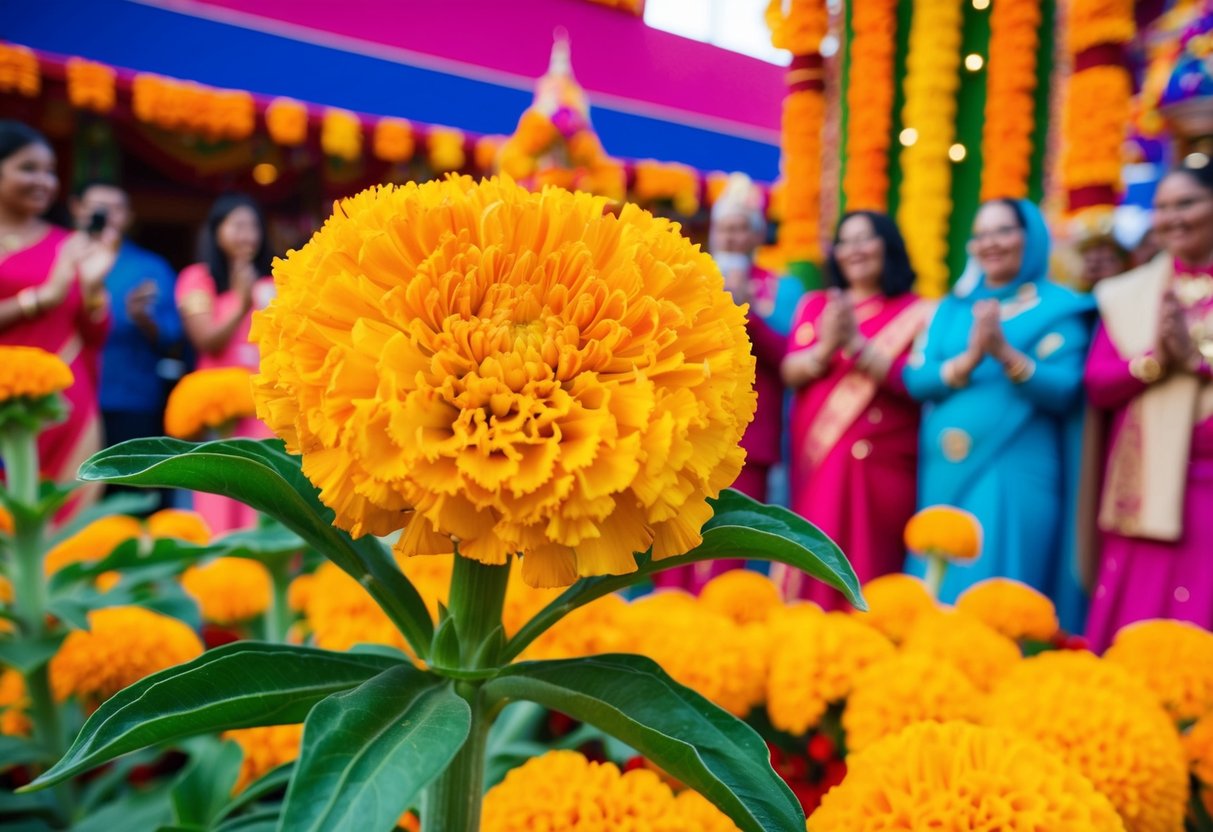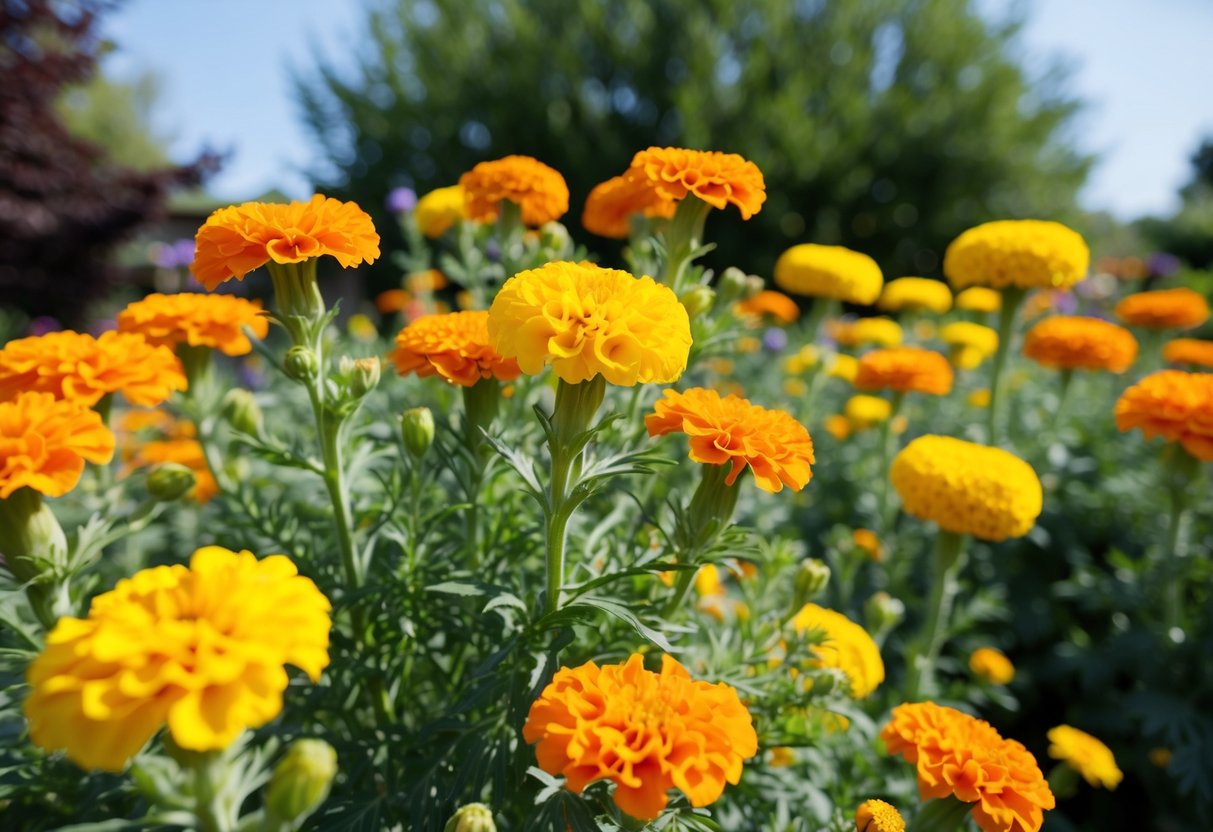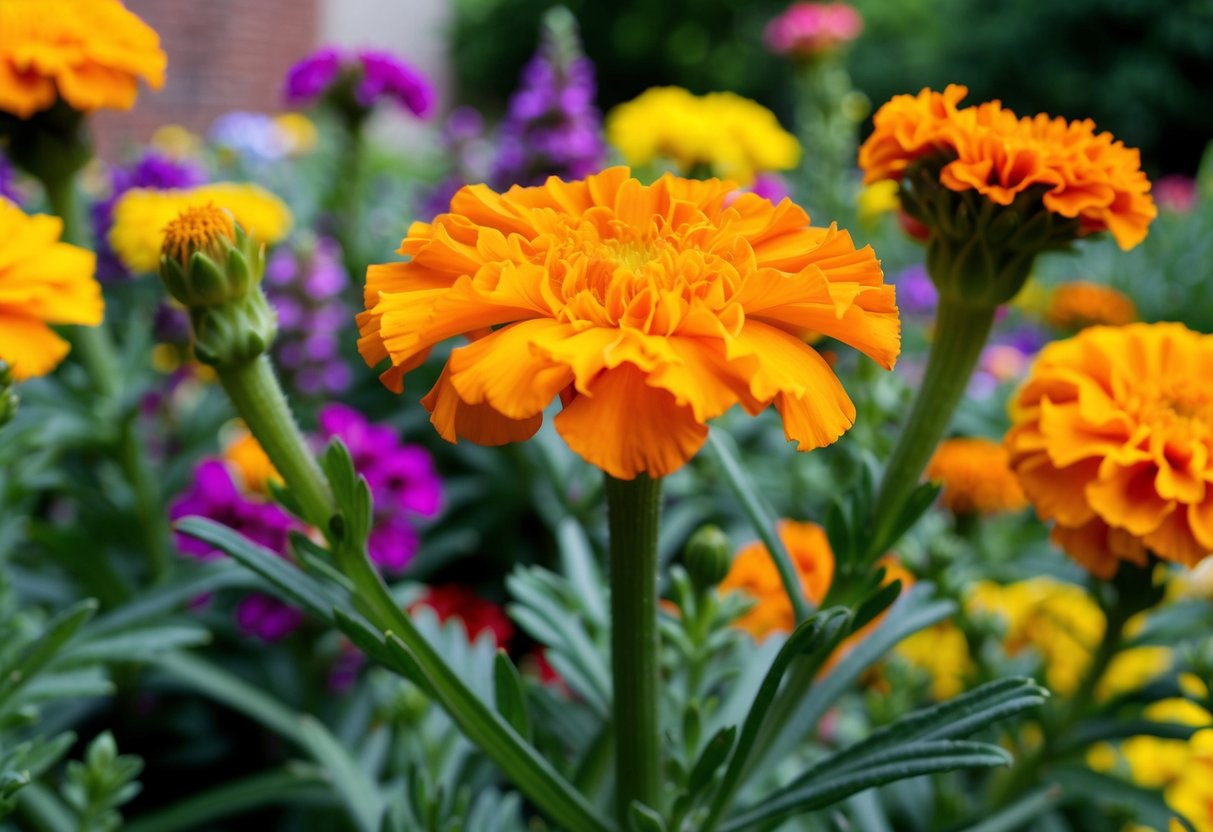What Month is the Marigold Flower? Discover Its Blooming Season
When you think of the marigold flower, bright and fiery colors often come to mind. These vibrant blooms are most commonly associated with the month of October. October’s birth flower, the marigold, symbolizes passion and creativity. They bring a touch of warmth to fall gardens, making them a favorite choice for this time of year.

Marigolds have a rich history and long-held symbolism, and they are cherished for more than just their beauty. These flowers are often linked to themes of passion and strength. Their warm hues can brighten up any garden, providing color until the first frost.
In addition to their beautiful appearance, marigolds are also easy to grow. This makes them a popular choice for gardeners of all skill levels. Whether you’re planting them in the ground or in containers, marigolds add a splash of color and symbolism to your garden space.
Origins and Classification

Marigolds have a rich history and classification. They belong to the Asteraceae family and exhibit vibrant colors. Their uses and symbolism have evolved, influencing cultures for centuries.
Taxonomy and Species
Marigolds belong to the Asteraceae family, which is one of the largest families of flowering plants. Within this family, there are two main genera associated with marigolds: Tagetes and Calendula.
Tagetes, commonly known as the Mexican marigold, is native to the Americas. A well-known species is the Aztec marigold, often planted in gardens for its pest-deterring properties.
On the other hand, Calendula, often called the pot marigold, is believed to originate from southern Europe. Its bright blooms have been cultivated for many years, making its exact origin unclear. Both types of marigolds are known for their vibrant yellow and orange flowers, adding a splash of color to any garden.
Historical Uses and Symbolism
Marigolds have played significant roles in various cultural traditions. In the language of flowers, marigolds often symbolize passion and creativity. This symbolism has deep roots, tracing back to ancient times.
In Mexico, Tagetes is used prominently in the Día de los Muertos celebrations. Their bright colors are thought to guide the spirits of deceased loved ones. Meanwhile, Calendula has ties to the Virgin Mary. It is sometimes called Mary’s gold, believed to have been used in religious ceremonies honoring her.
Throughout history, marigolds have been appreciated for their beauty and important cultural significance.
Marigold in Culture and Festivities

Marigolds hold special significance in various cultural celebrations. They are prominently used during Day of the Dead festivities and wedding ceremonies, symbolizing both remembrance and new beginnings.
Day of the Dead Traditions
In Mexico, marigolds are a key symbol of the Day of the Dead or Día de los Muertos. Known as the “flower of the dead,” these bright blooms are thought to guide spirits back to the living world. You’ll often see them in vibrant altars called ofrendas, which feature photographs, food, and personal items to honor the deceased.
The marigold’s bright colors and strong scent are believed to attract souls to the offerings. This flower not only embodies the duality of life and death but also brings beauty to the event. To experience a truly immersive cultural celebration, visiting a Day of the Dead event in Mexico can be eye-opening. It’s a time to celebrate the lives of loved ones with joy and remembrance.
Marigolds in Wedding Ceremonies
Marigolds also play a significant role in wedding ceremonies, especially in countries like India. These flowers are often used in garlands, stage decorations, and even on wedding attire. Their fiery hues symbolize optimism, prosperity, and a joyful future for the couple. Including marigolds in wedding decor adds a splash of color and a traditional touch to the celebration.
Marigolds can be a part of your own special day, bringing both visual appeal and cultural significance. They’re more than mere decoration; they represent happiness, luck, and success in married life. Using marigold flowers in weddings helps in creating vivid and unforgettable experiences.
Growing Marigolds

Marigolds are easy-to-grow flowers that thrive in various conditions. They are popular in gardens for their vibrant colors and natural pest-repelling properties. Whether starting from seeds or transplants, knowing how to plant and care for marigolds will ensure beautiful blooms.
Planting and Care
Begin with planting your marigold seeds after the danger of frost has passed. You can plant them directly in the ground. To ensure good growth, space French and signet types 8 to 10 inches apart, while African types need at least 10 to 12 inches of space. If using transplants, make sure you water them thoroughly after placing them in the garden.
Deadheading, or removing spent flowers, helps encourage new blooms. Marigolds are quite hardy, requiring minimal attention. These flowers are also drought-tolerant, needing only occasional watering during dry spells.
Preferred Growing Conditions
Marigolds prefer well-drained soil with a neutral pH, around 6.0 to 7.0. You don’t need rich soil; these flowers actually grow better in leaner soils. A soil-based potting mix suits marigolds well if you’re planting in containers.
They thrive in full sun, which helps them produce the best blooms. Consider adding a small amount of balanced fertilizer if needed, but avoid over-fertilizing, as it might cause lush foliage without flowers. With these conditions, your marigolds can grow beautifully all season long.
Marigolds in the Garden Ecosystem

Marigolds not only add a splash of color to your garden but also offer practical benefits. They enhance garden health by promoting pest control and attracting helpful insects.
Companion Planting Benefits
Marigold plants are great companions for many other crops. Their strong scent can repel pests, making them useful for protecting vegetables like tomatoes and peppers. French marigolds are known for their ability to repel nematodes, which are harmful to plants.
African marigolds grow larger and can provide shelter for other plants. Mexican marigolds have similar benefits due to their vibrant growth. By planting marigolds alongside your crops, you can improve the health and yield of your garden naturally.
Attracting Pollinators and Pest Control
Marigolds attract many beneficial insects and pollinators to your garden. Bees and butterflies are drawn to their bright blooms, helping with the pollination of other plants. This boosts the productivity of your garden.
In addition to attracting pollinators, marigolds also deter many common garden pests like aphids and whiteflies. Insects find marigold scent unpleasant, which keeps them away. By incorporating marigolds into your garden, you create a healthier environment with fewer pest problems.
Significance and Meanings

The marigold flower boasts vibrant colors and is rich with cultural and emotional symbolism. It carries meanings of love and joy, while also featuring elements of modesty and innocence. You’ll find connections to psychological well-being and even birth month traditions.
Birth Month and Symbolic Representations
The marigold is one of the birth flowers for October. People born in this month may find that the flower’s vibrant hues suit their personality. The bright yellows and oranges of the marigold symbolize happiness and energy, gifting those born in October with positive vibes.
Besides its role as a birth flower, the marigold is also rich in symbolism. It represents love and joy, making it a popular choice in celebrations and ceremonies. In various cultures, marigolds are used to honor deities or signify the energy of the sun. This connection with the sun translates into meanings of warmth and life, perfect for birthdays or other joyful occasions.
Psychological and Emotional Associations
The marigold’s striking colors can evoke a range of emotions and psychological responses. The warmth and brightness of the flower can boost feelings of joy and optimism.
Surrounding yourself with marigolds might uplift your spirits, delivering a sense of peace and tranquility.
Emotionally, marigolds can offer comfort. They’re thought to represent modesty and innocence, making them an excellent choice when you want to convey sincere emotions.
Whether seen in dreams or as a gift, marigolds can influence the mood and perceptions, leaving a lasting impression marked by joy and beauty.







